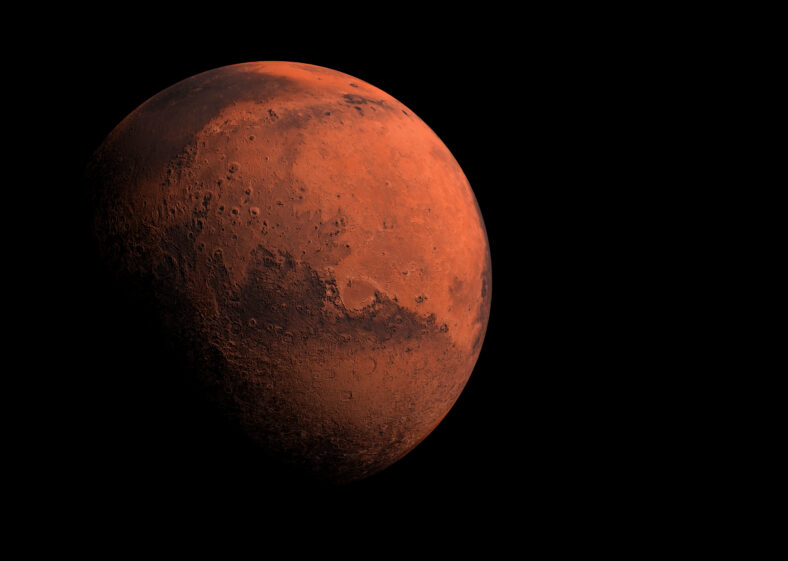The Longest Molecules Ever Have Been Found On Mars, Meaning Life May Have Been Possible There

NASA’s Curiosity rover has unearthed the longest molecules ever found on Mars. They date to 3.7 billion years ago, which is around the same time that life first emerged on Earth.
Chains of molecules containing up to 12 carbon atoms linked together were detected in an old Martian rock sample collected by NASA’s Curiosity rover in 2013 in Yellowknife Bay, a dried-up lakebed on Mars.
The long carbon chains are thought to have originated from fatty acids, which are produced by biological activity on Earth.
Fatty acids can also form from non-biological activity. Their existence on the Red Planet means that there may be signs of ancient Martian life within its soil.
“The fact that fragile linear molecules are still present at Mars’ surface 3.7 billion years after their formation allows us to make a new statement: If life ever appeared on Mars billions of years ago, at the time life appeared on the Earth, chemical traces of this ancient life could still be present today for us to detect,” said Caroline Freissinet, a co-author of the study.
The rover’s Sample Analysis at Mars (SAM) instrument detected the hydrocarbon molecules decane, undecane, and dodecane, which contain chains of carbon atoms in groups of 10, 11, and 12.
The hydrocarbons were accidentally discovered in the sample during an attempt to hunt for evidence of amino acids, the building blocks of protein. The researchers preheated the sample to 2,012 degrees Fahrenheit to release oxygen before analyzing it.
They did not find amino acids; instead, their results revealed the fatty molecules. It is possible that the molecules broke off from undecanoic acid, dodecanoic acid, and tridecanoic acid. The researchers tested this theory by mixing undecanoic acid into a Mars-like clay and processing it in a lab.
As expected, it yielded the molecule decane, strongly suggesting that the carbon chains came from fatty acids. While molecules like these are usually produced by biological processes on Earth, they can also occur through non-biological processes.

Sign up for Chip Chick’s newsletter and get stories like this delivered to your inbox.
However, non-biological processes typically only result in fatty acids with fewer than 12 carbon atoms. The longest carbon chain identified had 12 carbons, but the instrument does not have the capability to detect longer molecules, so longer molecules may have been present as well.
“There is evidence that liquid water existed in Gale Crater for millions of years and probably much longer, which means there was enough time for life-forming chemistry to happen in these crater-lake environments on Mars,” said Daniel Glavin, a co-author of the study and a researcher at NASA’s Goddard Space Flight Center.
Overall, the discovery is important because it confirms that potential evidence of life can survive on Mars for billions of years.
One day, the researchers hope to bring samples of Martian soil back to Earth for proper analysis and, hopefully, solve the mystery of the Red Planet’s elusive life.
The study was published in the journal Proceedings of the National Academy of Sciences.
More About:News





